It depends on who you ask.
If you ask Dave Ramsey, the answer is none. You shouldn’t have debt, you shouldn’t use credit cards, and the benefits don’t outweigh the drawbacks.
If you ask a travel blogger, the answer is ALL OF THEM. Get all the points, get the welcome bonus, fly for cheap, stay in fantastic hotels for a fraction of the rack rate, and live life to the fullest.
The answer, like anything else, is somewhere in the middle.
You should have as many credit cards as you need.
Here is how to determine what you need:
Table of Contents
My Credit Card Strategy
My credit card strategy is simple.
- You have a “daily use” card, which is going to be your default credit card, that will handle most of the transactions.
- Then, have “specialist” credit cards that offer a benefit above and beyond your default card for certain types of transactions.
The idea is that you will use your default credit card for most transactions. This will be your highest cashback or rewards card on all purchases. Then, you may bring in specialist credit cards for transactions in which you will earn a higher cashback.
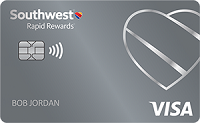
We have a “specialist” card in the Costco Anywhere Visa Card, which doubles as our Costco membership card. We use it for gasoline (4% cashback on the first $7,000 spent, then it’s 1%) and restaurants (3%). We also use it at Costco, where we get 2%.
Our set up is super simple. Two cards.
If we didn’t fly Southwest, our “daily use” card would likely be the Chase Freedom Unlimited card because it offers 5% on travel purchases through Chase Travel, 3% at drug stores and dining in restaurants, including takeout and eligible delivery services, plus 1.5% on all other purchases. Getting that percentage back on all other purchases is a convenient catch-all, you’re guaranteed to get a pretty solid cashback rate even if you forget what card you’re supposed to use.
Finally, having several cards also means that if one is compromised, I still have another credit card I can use until a replacement arrives. I don’t lose that convenience.
How to Pick a “Daily Use” Card
You want to pick a card that offers great benefits even if it were the only credit card you had. You want a card that, if you used it “by accident” because you forgot which card had the best cashback rate, you wouldn’t be that upset.
If you have reasonably good credit, your daily use credit card should offer at least 1% cash back. It should also have no annual fee – 1% cashback with no annual fee are table stakes in the credit card game.
While we’re on the subject of where the bar should be set – if a credit card doesn’t offer rewards, whether it’s in reward points or cashback, it’s useless to you (as a daily use card or otherwise). The convenience of a credit card without rewards is really, functionally, no better than a debit card. While there are differences between a credit card and a debit card, the biggest value in a credit card is in the rewards structure.
One exception: If you are building credit and using a retail store credit card to do it. Even then, store credit cards offer something to its users, even if it’s not a generous reward structure.
If your credit score is pretty good, you should look for a card that offers more than 1% cashback. There are some credit cards that now offer 1.5% to 2% cashback as a baseline.
Don’t want to overthink this? One of these two cards are great choices:
Chase Freedom Unlimited Card
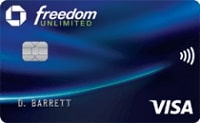
As an added bonus, you get Additional 1.5% cash back on everything you buy (on up to $20,000 spend in the first year) - worth up to $300 cash back as a welcome bonus.
How to Pick “Specialist” Cards
After picking your daily use card, you can stop there or add on “specialist” cards that help you optimize your spending. There are two ways to think about this:
- Find a specialist card with higher cashback rates based on your spending
- Find a specialist card with rewards you absolutely love
Finding a Card Based on Spending
When you look at your budget, you will have a handful of major categories of spending.
For most households, it’ll include:
- Housing – which is your rent or mortgage, also includes related expenses like utilities, repairs, HOA dues, etc.
- Food – groceries and dining
- Transportation – car payments, warranty, gasoline, also mass transit
- Insurance – healthcare, homeowners, car, etc.
- Household supplies – toiletries, detergents, cleaning supplies, etc.
- Personal care – gym memberships, haircuts, salon
- Debt service – student loans, credit cards.
When you think about credit cards and rewards, each card has a structure that targets certain categories. Some categories never get any attention in reward structures, like insurance and personal care, while others get them all the time, like food and transportation.
Knowing your budget can help you decide which credit cards to get because you will know how much that “extra” reward will get you.
If you know you spend quite a bit on dining in restaurants, then you’ll want to find a card that gives you a higher rate for that category of spending. For example, the Capital One SavorOne Cash Rewards Credit Card earns 3% Cash Back on dining, entertainment, popular streaming services and grocery stores (excluding superstores like Walmart and Target), plus 1% Cash Back on all other purchases.
Finding a Card Based on Rewards
Credit cards offer rewards in one of three ways:
- High dollar value welcome bonus – What you get for spending over a certain amount within months of opening your account
- Rewards structure based on spending – What you get in points or cashback based on your spending
- Annual benefits as a card holder – Bonus perks offered by an affiliated partner of the card
As you think about opening up a new card, be careful to look at all three factors because credit cards have become very complicated. You want to maximize your total reward, not just see big numbers and assume it’s the best card for you.
Welcome Bonus
The welcome bonus, also called a sign up bonus, is when a credit card will give you a few hundred dollars (or the equivalent in loyalty points) when you spend a certain amount within a short period of time. Sometimes the spending requirement is high, like a few thousand dollars, and sometimes it’s more modest, like closer to $500.
The time frame you have to spend it in will also vary. The shortest, and most common, time periods are generally three months. You may have a tiered system where you get a big lump sum for reaching the spending thresholds in three months and then another lump if you can reach a much higher spending tier over the next year.
We maintain a list of the best credit card bonus offers here.
Rewards Structure
After the welcome bonus, it’s important to review the rewards structure of the card itself. You want one that offers a reasonable percentage as compared to other credit cards.
What can muddy the waters a little bit is when you get loyalty points, such as Chase Ultimate Rewards points or Southwest Rapid Rewards points, because those don’t translate into 1 point = 1 penny. Sometimes the points are worth more, sometimes they’re worth less.
We fly Southwest a ton so we know a Rapid Rewards point is worth 1.6 cents to us. They may be worth far less if you don’t fly Southwest.
Annual Benefits
Finally, some credit cards offer you annual benefits that apply to other programs. These are common with travel reward cards.
For example, The Marriott Bonvoy Boundless card has a great welcome bonus and a good cashback structure but they also give you a Free Night Award valid for a one night stay at their property (up to a redemption value of 35,000 points). You also get automatic Silver Elite Status at their hotels.
If you are loyal to Marriott hotels, getting one of their travel cards means a free night plus upgraded status (with an easier path to higher status), which all improve the quality of your stays at their properties.
Have a Goal in Mind
Sometimes, you might open a new specialist credit card with a goal in mind. Years ago, I opened a Starwood Card (now merged into the Marriott Bonvoy program) to get the points so that we could use it at the Swan in Disneyland. We didn’t stay in hotels often but I knew that opening the card would get us points we could use to get a free stay (or far cheaper stay).
Sometimes it’s not about maximizing the rewards but using credit cards to achieve an objective.
✨ Related: How to Lower Your Credit Card Interest Rate
There’s No Right Number
As you can see, there’s no right number of credit cards. I’d argue that you want two but you could have more.
The only time you want to limit the number of cards is if the system starts getting unwieldly to manage. It’s really no fun carrying around a ton of credit cards or having them all linked in your Apple Pay or other payment services. You do want to keep things simple, yet efficient because otherwise, the complexity can cause problems.
Having more cards than you need is not nearly as bad of a problem as you may think. Since your credit score is influenced by your credit utilization, which is how much of your credit limit you are currently using, having more cards means your utilization is likely lower. Keep it under 30% and you’re OK.
So if you feel like you have too many credit cards, that’s OK, just don’t open any more! (you could also ask for credit limit increases to lower your utilization)
How many credit cards do you have?
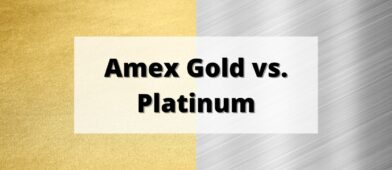

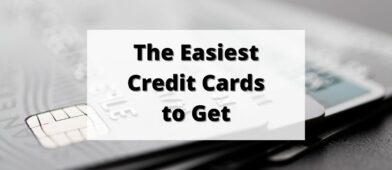
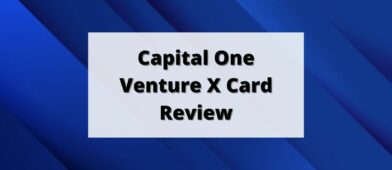
Stephen Hudecek says
Great update to the always changing landscape of who has the best credit card. I recently added the Amazon VISA CC to my lineup of cards and put all of the monthly bills I could (e.g., cable, oil, EZ pass, cell phone). I was amazed at how much accrued in Amazon credit after several months… so many things I buy I get “free” on this credit. For big-time Amazon users, this is the way to go.
Yes, I’ve been debating doing that given how much we spend on Amazon, especially during the pandemic. It’s a solid credit card.
Mighty Investor says
I enjoyed this thoughtful article. I veer back and forth between the pragmatism you describe above and then thinking I should lock in sign in bonuses. If you think about it, the sign on bonuses tend to provide so much more economic value than the ongoing 1 or 2% cash back etc that it really is what to focus on if you are ok with taking the very minor brief hit to your credit score when applying for a new card.
They do provide a tremendous amount of economic value and totally worth doing if you have the time to keep up with it. I think the same goes for bank bonuses too.
Mighty Investor says
Pro tip if you get the Amazon card. Take the Amazon reward points that you build up as statement credits rather than spending them on Amazon purchases. That way every purchase you make at Amazon earns additional reward points because you are using the card for each and every purchase.
Every bit counts!
MICHAEL L GRAFFEO says
Hello Jim,
USBank has a credit card that Gives back 4% for restaurants !
Yes, the U.S. Bank Altitude card gives you 4% cash back on restaurants and looks pretty solid. Also comes with 20,000 bonus points when you spend $1,000 in eligible purchases.